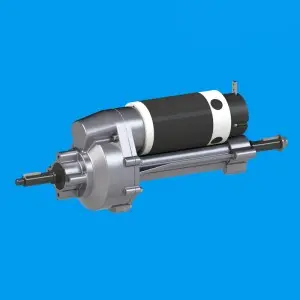When it comes to high-performance sports cars, the Corvette has undoubtedly established its iconic status. The transaxle system is one of the key components for its excellent driving dynamics. Best known for its use on the Corvette, the transaxle plays a key role in distributing power and optimizing the car’s handling. In this blog post, we’ll delve into the inner workings of the Corvette transaxle, revealing its mechanism and explaining how it plays an integral role in the Corvette’s legendary performance.
1. Understand the transaxle
Before we get into the details of the Corvette transaxle, let’s first understand what a transaxle is. Unlike most conventional vehicles, which typically have separate transmissions and differentials, a transaxle integrates these two components into a single unit. This compact design reduces weight and improves weight distribution for better handling and performance.
2. Corvette transaxle system
The Corvette has a rear-mounted transaxle, which means the transmission and differential are located at the rear of the vehicle. This unique configuration helps achieve near-perfect 50:50 weight distribution, enhancing the car’s overall balance and handling characteristics.
Your Corvette’s transaxle system consists of several key components. At its heart is the gearbox, responsible for transmitting power from the engine to the wheels. Typically, Corvettes come with either a manual or automatic transmission, both of which are engineered to handle the massive amount of power the car generates.
Adjacent to the transmission is the differential, which distributes power between the rear wheels. Differentials allow the wheels to rotate at different speeds when cornering, allowing for smooth cornering. This feature helps prevent wheel spin and maintain stability during aggressive driving.
3. Power distribution and torque vectoring
One of the most significant advantages of a transaxle system, such as the one in the Corvette, is its ability to optimize power distribution and torque vectoring. As the engine sends power to the transmission, the transaxle system dynamically adjusts the amount of torque distributed to each wheel. By selectively applying force to the wheels with the most traction, the Corvette achieves enhanced stability, traction and overall performance.
During cornering, the transaxle system can further optimize power distribution by using torque vectoring. Torque vectoring selectively applies torque to specific wheels, allowing the car to rotate more precisely and efficiently when cornering. This feature significantly improves handling and ensures the Corvette remains firmly planted on the road even during aggressive driving maneuvers.
The Corvette transaxle system is an engineering marvel that enhances your vehicle’s performance, handling, and overall driving experience. By integrating the transmission and differential into a single unit, the Corvette achieves balanced weight distribution for superior handling and agility. The ability to distribute power and torque to individual wheels further enhances the Corvette’s driving dynamics, making it an exciting sports car to experience firsthand. As automotive technology continues to evolve, the transaxle system remains an important component in delivering the legendary performance that has become synonymous with the Corvette name.
Post time: Nov-27-2023

